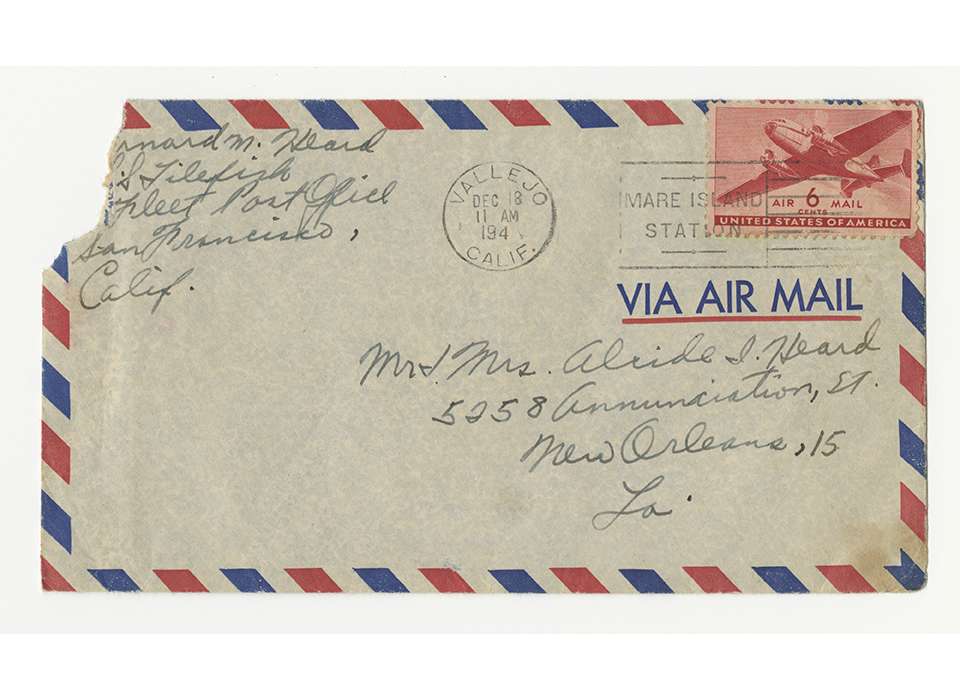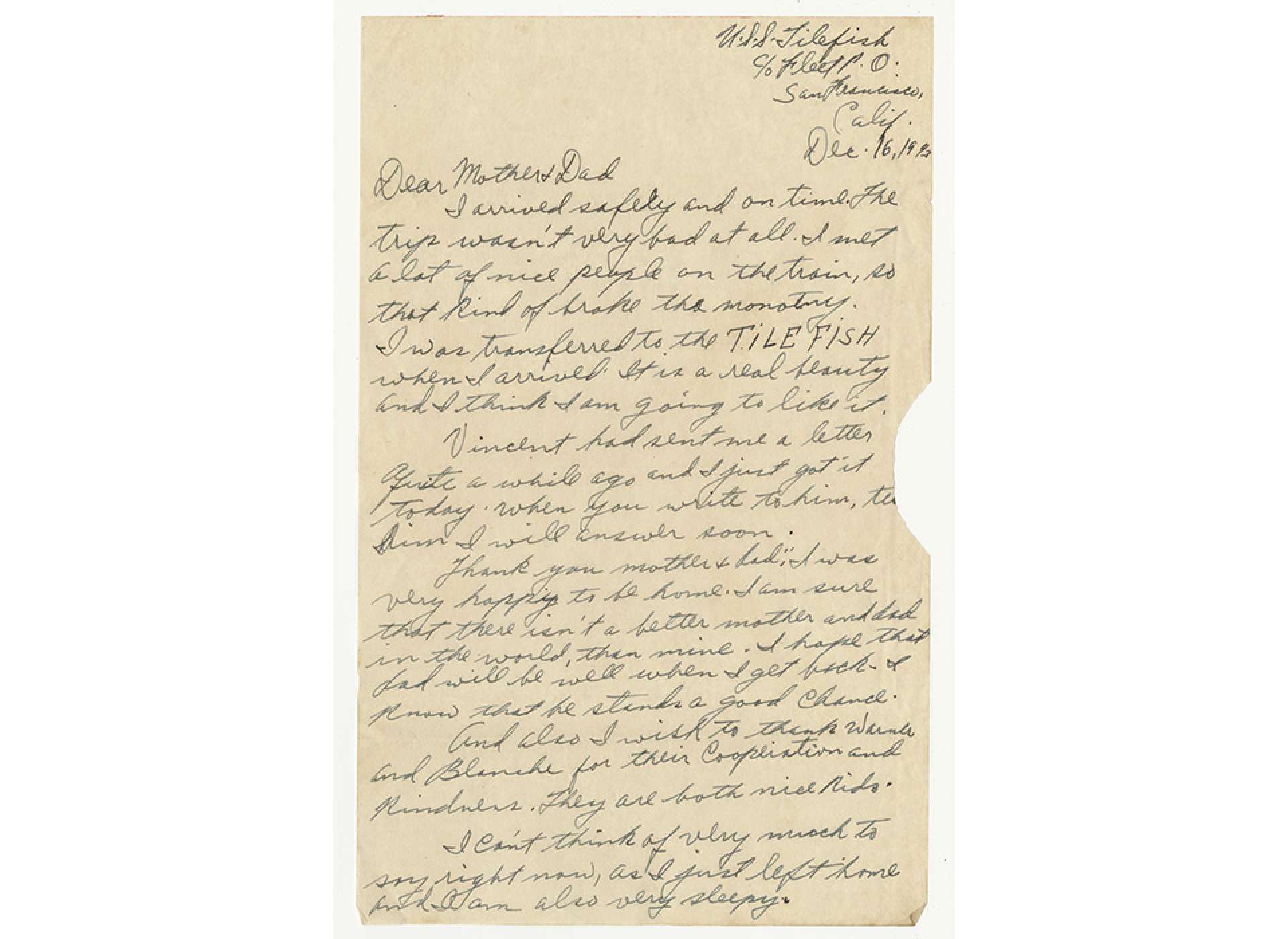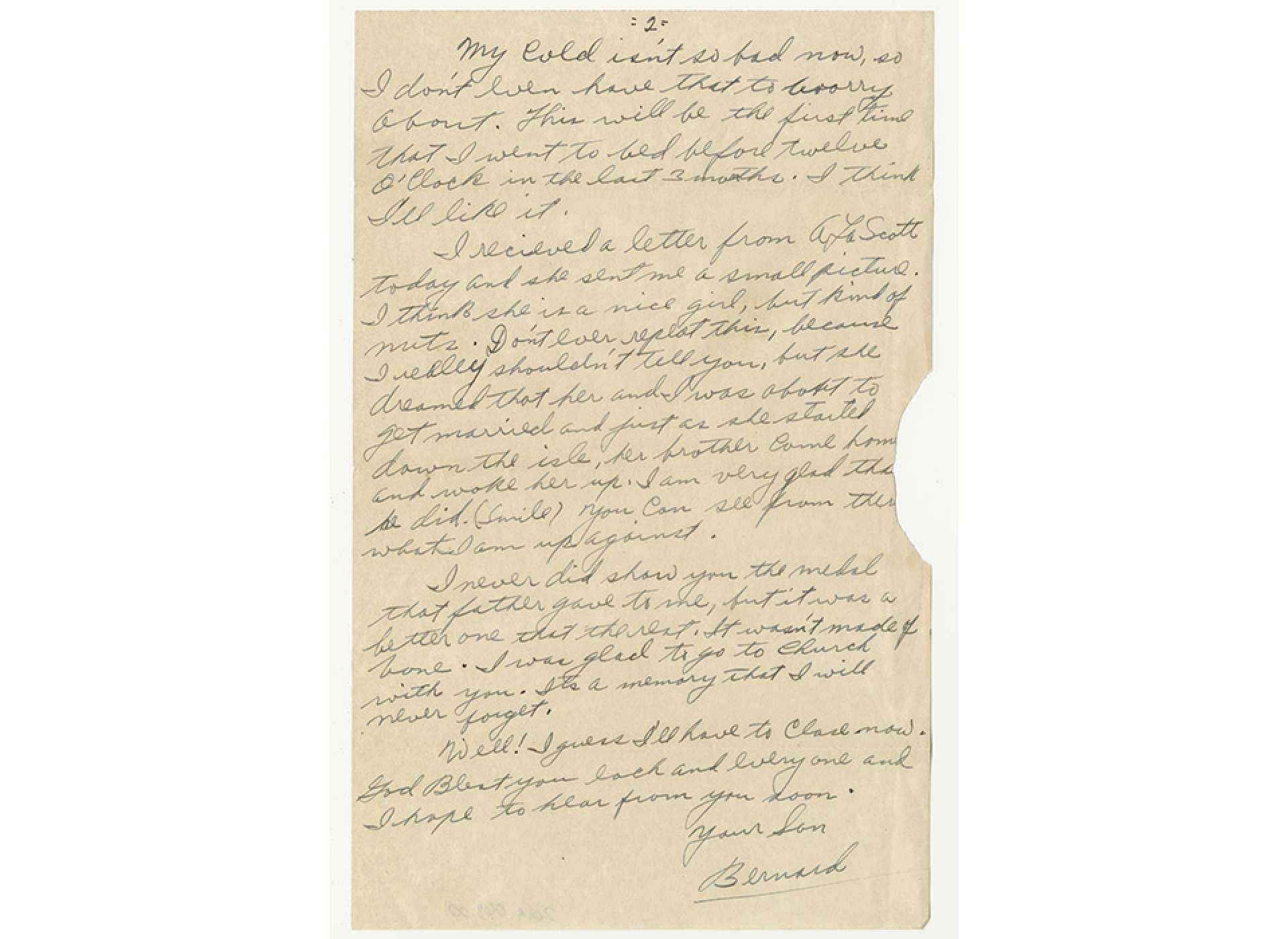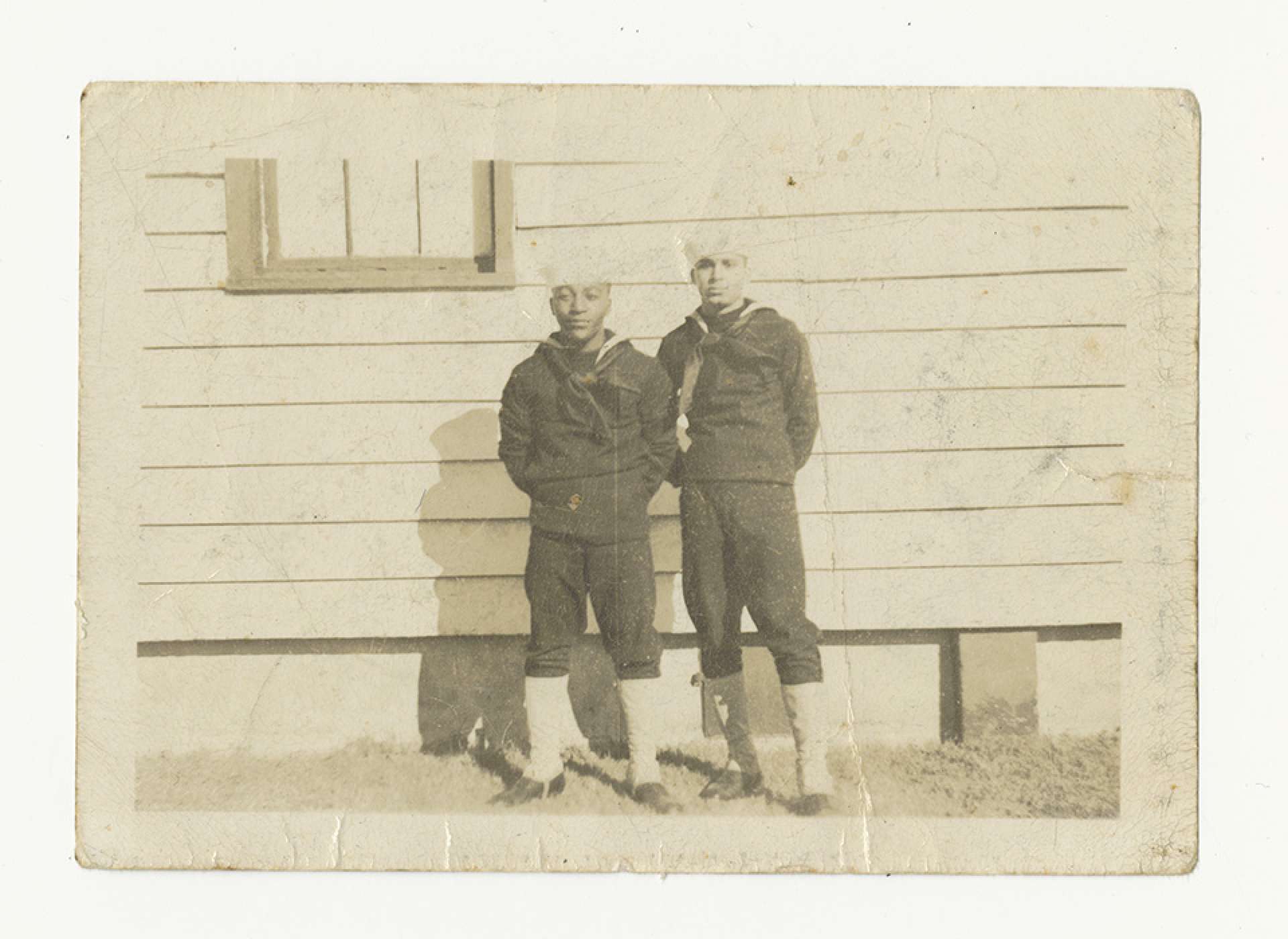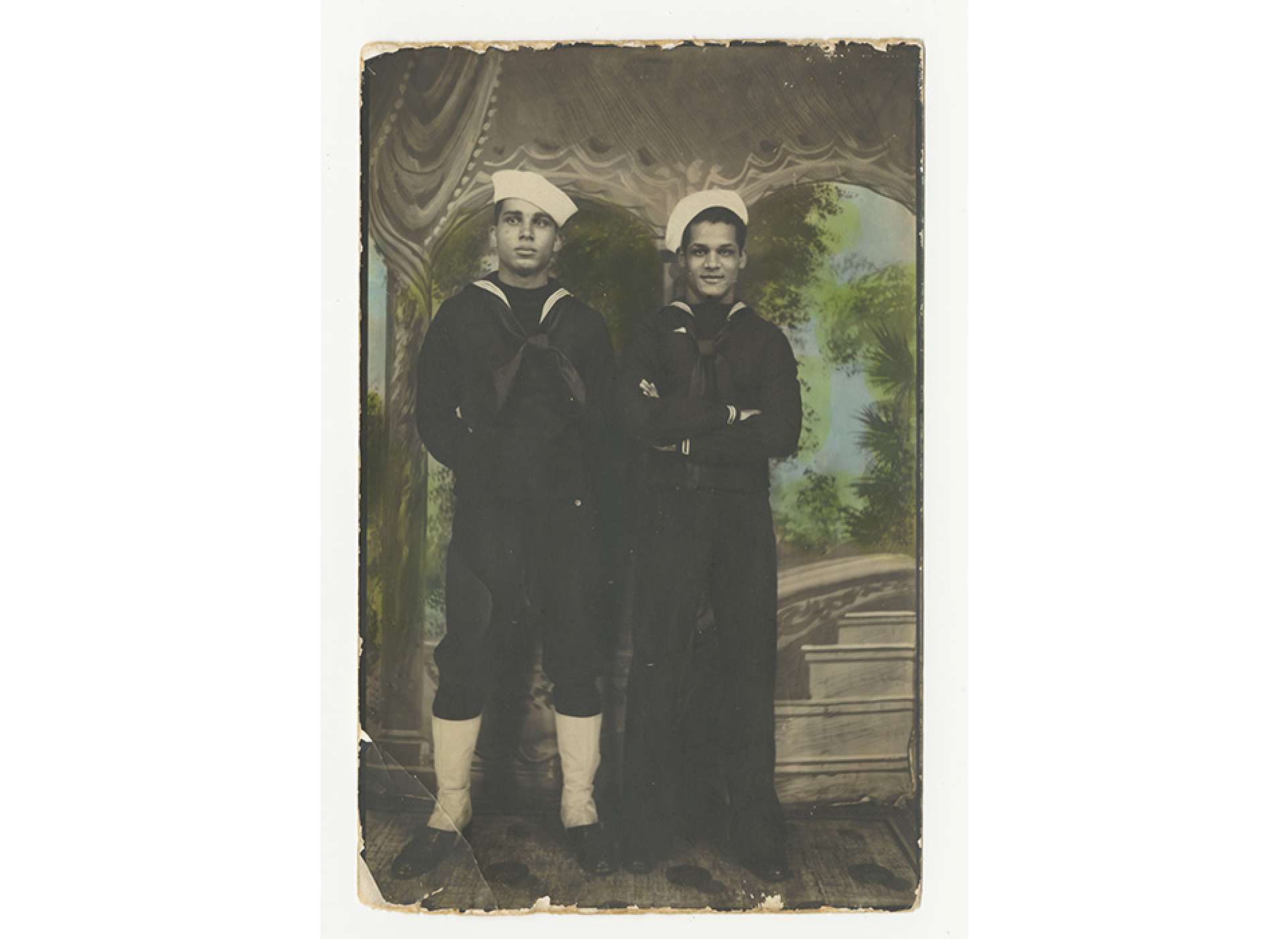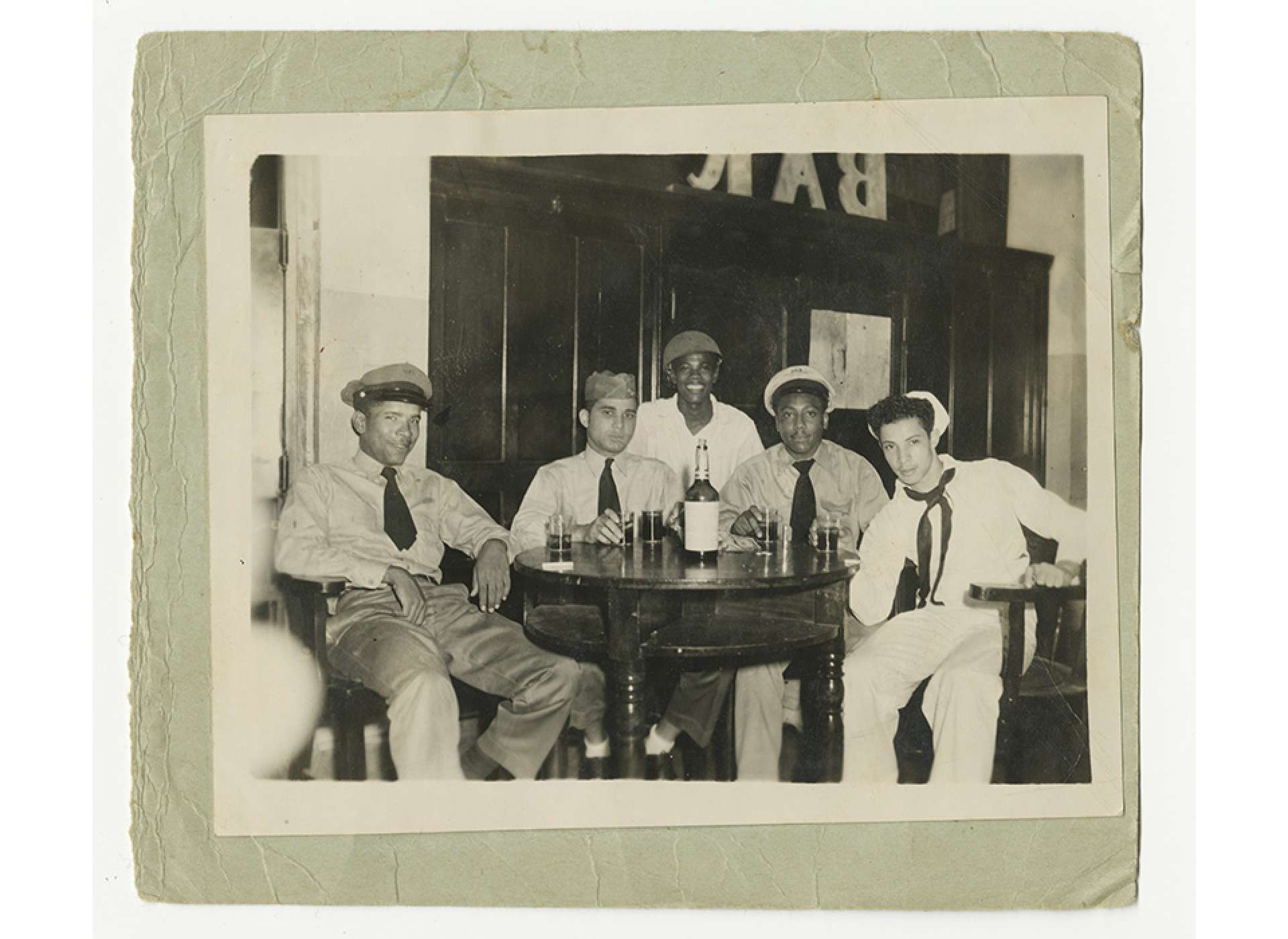Letters are seen as a way into the past. As a colleague once said to me—something we often hear about our profession—we hang out and read other people’s mail, but it is ok because the letters are very old. During my time as a curator I have found that letters, more often than not, are mundane. We have thousands of them in our collection, representing every service branch and theater. Most of these letters are very similar—basic communications back and forth between family—hardly material for a novel or great historic work. But if you look past the content on the pages you realize that letters are a tool of the basic human desire to stay in communication with each other, they enable people to do it from a distance. If you went back and read your text messages, emails, or transcripts of phone conversations from previous years you would likely be very bored by the majority of the details. Similarly, many letters you read do not tell you a lot about what a person is going through in that moment because they are reaching out just to keep the conversation going and feel some sense of normalcy or to shield you from the truth.
They ask about family, let you know if they are sick, they might render an opinion on something, talk about a girl—very similar to the conversations that casually take place around a dinner table at home. A great example of this type of letter was written by Bernard Madison Heard on December 16, 1943, to his mother and father in New Orleans, Louisiana.
-

First page of Bernard Heard’s letter to his parents, written in December 1943. From the Collection of The National WWII Museum, Gift In Memory of Bernard Madison Heard, 2014.063.001.
-

Second page of Bernard Heard’s letter to his parents, written in December 1943. From the Collection of The National WWII Museum, Gift In Memory of Bernard Madison Heard, 2014.063.001
Heard’s letter starts with a status update—he had arrived after a long train ride to his next duty station. He had been assigned to a newly commissioned ship, the submarine USS Tilefish (SS-307), and thought she “is a real beauty.” He talked about meeting a lot of nice people on the train and how it helped break up the monotony. He let them know he had received a letter from his brother Vincent (also in the US Navy), that he was over his cold, and how much he loved spending time with his mother at home during his leave. He wished his father a quick recovery from an illness and even went on to speak about a girl who wrote him, saying she had a dream they were getting married but was woken up by her brother just before the ceremony, to which Bernard commented in jest, “I’m very glad he did (smile).” He ended with a blessing and a hope to hear from them soon, signing off, “your loving son, Bernard.”
Artifacts tend to capture a single moment in someone’s story, Heard’s letter is no different. When interpreting them you often have to look at the other elements that are not represented by the artifact to help put it into context. What this letter does not tell you is that Heard was a career Navy man, enlisting on February 11, 1940, and remaining on active duty until the mid-1950s. By the time Heard wrote this December 1943 letter to his parents he was already a combat veteran of the elite submarine service. He served on many different ships before being assigned to the USS Tilefish, most notably he served during three very adventuresome patrols on the USS Snook (SS-279) that resulted in the sinking of seven Japanese ships. Like other sailors on his submarine, Heard survived long cramped patrols, terrifying depth charge attacks, and exciting torpedo strikes.
-

Boot camp picture of Bernard Heard (right) standing next to an unknown sailor. From the Collection of The National WWII Museum, Gift In Memory of Bernard Madison Heard, 2014.063.002
-

Bernard Heard [right] and his brother, Clemonce Raymond Heard [left], pose for a photo wearing their dress blue uniforms. From the Collection of The National WWII Museum, Gift In Memory of Bernard Madison Heard, 2014.063.004
-

Bernard Heard (second from left) sits at a table with other African American sailors, date and location unknown. From the Collection of The National WWII Museum, Gift In Memory of Bernard Madison Heard, 2014.063.007.
But Bernard Heard was not like other sailors, his story was different. Heard was a young African American man, confined to service in the Steward’s Branch. Instead of being able to strike for any rating like white enlisted sailors, racism and segregation in the US Navy limited him to a seagoing domestic role—cleaning up after officers, serving their food, and being at their beck and call. This environment was not dissimilar to the society Heard likely lived in before the war, but even a segregated Navy would take him around the world. It is true that during World War II, the US Navy opened up its ranks to African Americans, however, it was not until 1943 that the number of enlisted African Americans who were accepted into the "regular rates" began to exceed the numbers of men that had been forced into the Steward's Branch.
What this letter does not tell us about Heard’s experience with racism is left for speculation. The life of an African American man in the US Navy was complicated. Accounts from servicemen at the time show that they faced a harsher, more regimented form of segregation than many had experienced in civilian life. Separate training facilities, separate living quarters, limited chances for advancement, and restriction to a servant’s role were the norm for these men. However, there were a few things in the US Navy that judged all men as equal—the weather and enemy shells. When the ship was threatened by stormy seas or enemy action, all hands were in the fight together, even the steward’s mates rushed to their battle stations alongside their white shipmates. There are stories of shells tearing ships apart, where black hands grasped white hands offering comfort and aid, where race melted away in the moment. Sadly, these lessons were much harder to remember when the shells stopped flying.
Heard’s letter stands as a wonderful example that regardless of race, gender, or religious beliefs, especially in times of war, people missed their families. This letter captured a single, simple moment in Heard’s long and storied service—the young man missed his family. Next time you see a letter in our collection, take time to look at the context and consider how much more impactful the single moment it represents might be.
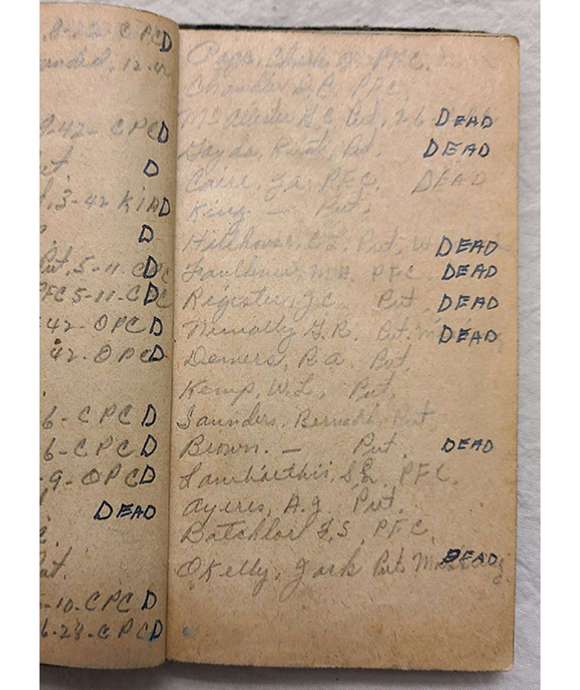
Curator's Choice: The Book of the Dead and Dying
A small notebook by Charles Don Page records the defining moment in 212 men’s lives under the Imperial Japanese Army.
Joshua Schick
Cite this article:
MLA Citation:
APA Citation:
Chicago Style Citation:
